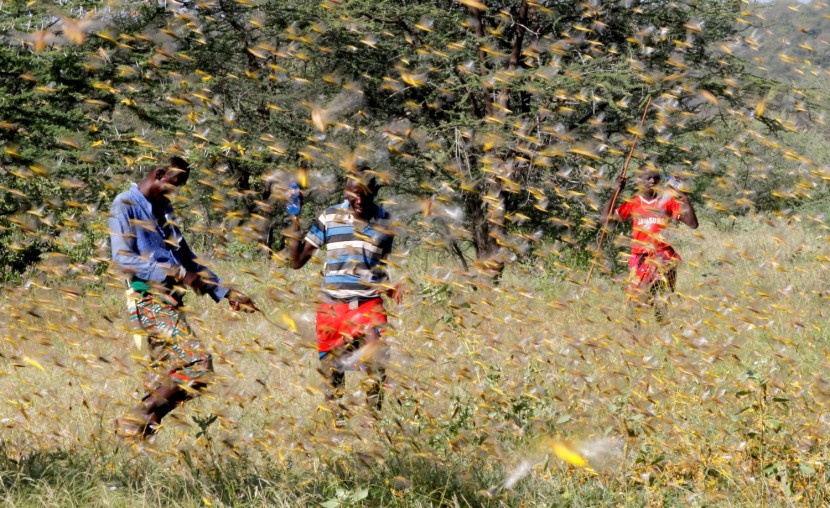
The locust outbreak continue in parts of East Africa as billions of locusts swarm the region and destroying and devouring its farmlands. In a span of 70 years, this horde of desert locusts that swarm Kenya is the worst infestation they have seen. The crop-destroying pests that invaded the country were from its neighbors Ethiopia and Somalia, which have not experienced an outbreak like this in 25 years.
According to Fox News, United Nations has warned that people from the region are experiencing extreme hunger and cannot afford to welcome another shock. Keith Cressman, senior locust forecasting officer of the United Nations Food and Agriculture Organizations told Fox that the billions of locusts continue to swarm further into the regions in large waves.
In addition, Cressman said in a news conference at the U.N. headquarters in New York, that the locusts have moved into the northeastern part of Uganda and are expected to move across the border into South Sudan's southeast region, any day from now. Whilst the locust infestation is yet to come, South Sudan is already experiencing hunger and is still trying to emerge from a civil war.
According to regional authorities, a single locust swarm can be composed of about 150 million pests for every square kilometer of farmland, which is almost the size of 250 football fields.
Cressman also said that the swarm can eat the same amount of food as everyone in New Jersey, New York, and Pennsylvania (tri-state area) in one day. Even just a medium-sized swarm of these insects can eat as much as the entire Kenyan population. Thus, making it necessary to take action immediately to avoid further consequences.
Per the United Nations officials, they indicated that there are already about 13 million people that are threatened by food insecurity in the region and if the infestation continues another 20 million of the population are in danger of suffering from extreme hunger.
U.N. also emphasized that immediate action is needed before fresh vegetation brought by more rainfall in the weeks to come feed a new generation of these insects and increase their population. Further adding that the number of the locusts can grow up to 500 times their current number before the dry season arrives.
Based on U.N. humanitarian chief, Mark Lowcock, if immediate action is not taken and the problem is not reduced at this very moment, this locust infestation has the potential to be one of the most devastating plagues brought by locusts in our living memory.
As reported by Reuters, while there have air dumping of pesticides through planes and pesticide spraying in the ground continues, U.N. has informed that it will begin sending drones that have mapping sensors and atomizers to spray pesticides in the affected regions.
U.N. has asked for immediate aid of $76 million for the locusts infested areas. However, they still only have $20 million in their hands which already includes the $10 million that was released from the U.N. emergency fund and the $3.8 million from FAO.
On Monday, the United States has released $800,000 in aid while the European Union has released 1 million euros. According to U.N., if the response will not scale up today, there is a big risk of a catastrophic event.
© 2025 HNGN, All rights reserved. Do not reproduce without permission.








